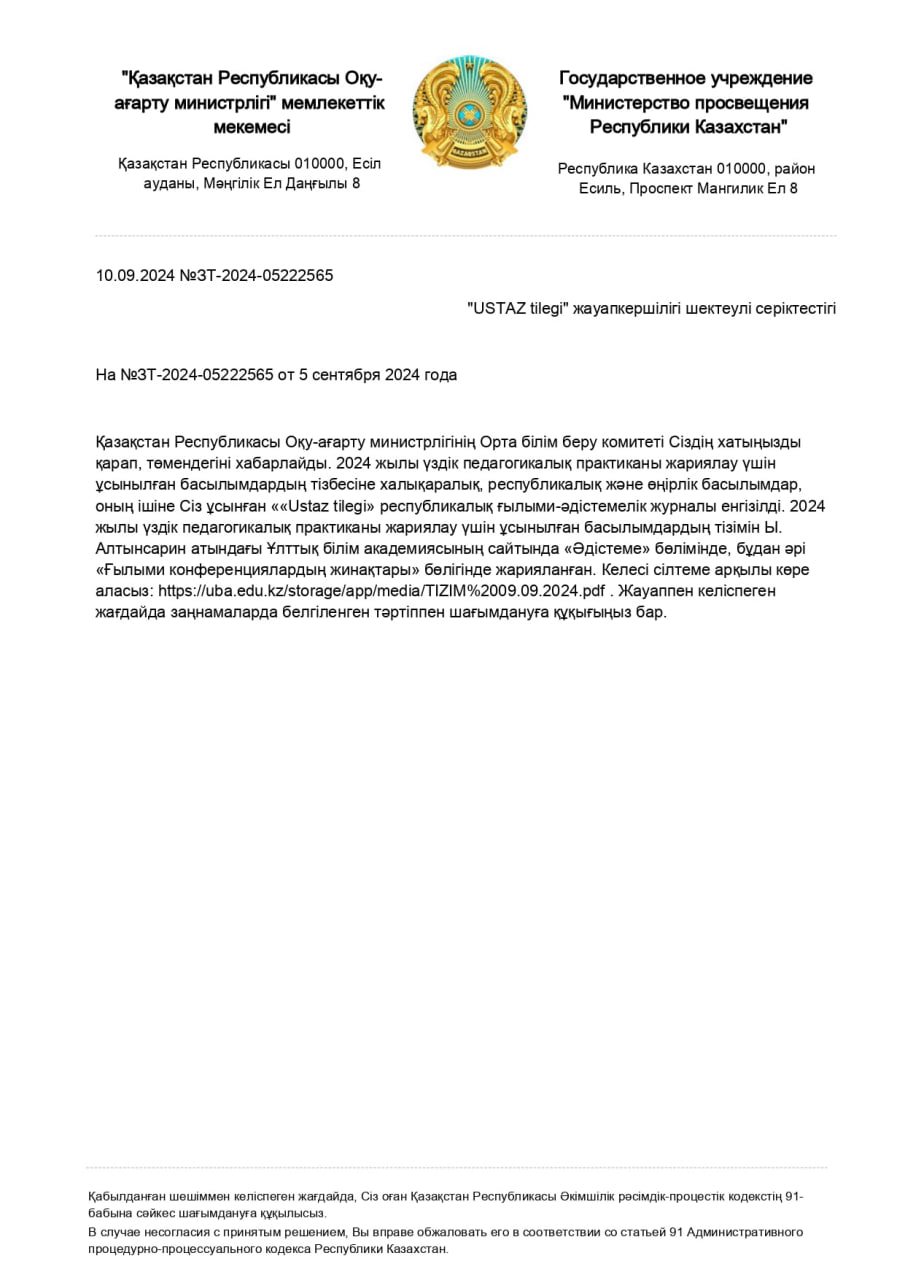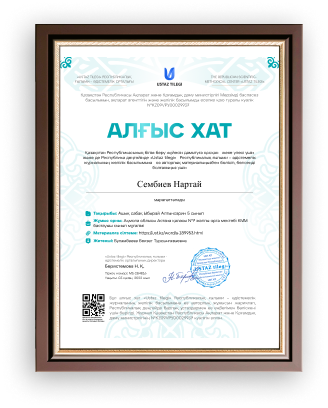
Lesson Plan
|
Unit:6 |
Reading for Pleasure |
|
Teacher’s name: |
|
|
Date: |
|
|
Grade: 5 |
Number present: absent: |
|
Theme of the lesson: |
Unit Revision. |
|
Learning objectives: |
5.R5 deduce meaning from context in short texts on a limited range of familiar general and curricular topics 5.C6 organize and present information clearly to others 5.S6 communicate meaning clearly at sentence level during, pair, group and whole class exchanges |
|
Lesson objectives: |
All learners will be able to: -memorize some words learnt -understand with some support the meaning of vocabulary learnt -say some words about the topic Most learners will be able to: -memorize most of the words learnt -understand with little support the meaning of vocabulary learnt -say some sentences about the topic Some learners will be able to: -memorize all the words learnt -understand the meaning of all the vocabulary learnt -describe the characters |
|
Assessment criteria |
-know the vocabulary -differentiate the information -write sentences |
|
Value links |
Ls will work together as a group showing respect and being polite with each other. |
|
Cross curricular links |
Literature |
|
ICT skills |
PPT, the use of whiteboard |
|
Previous learning |
Learners read non-fiction books in Kazakh, English, Russian languages |
Plan:
|
Part of the lesson/Time |
Teacher’s activity |
Student’s activity |
Assessment |
Resources |
|
Beginning of the lesson 3 min. |
Organization moment : 1.Greeting. 2. Organization moment. 3. Explain the lesson objectives and assessment criteria. |
|
|
|
|
Checking of the homework. 5 min. |
Picture identification. |
Ss look at the pictures and name them in English. Aim: involve Ss for the lesson with good energy. Efficiency: break down barriers between Ss and work in a warm atmosphere. |
Feedback: «The praise» method to evaluate Ss. like: “Good job! Well done!” Total: 3 points. |
PPP-2 |
|
Pre-learning. Warming up. 3 min. |
Say the titles of both stories? Who wrote “The Fisherman and the fish”? ”What types of literature are these stories? Why is the story about Robin Hood a legend? Differentiation: All Ss understand the question, but some of them answer the questions. The task is differentiated by the speaking skills of Ss. |
Ss answer the questions as possible. Aim: motivate Ss for learning and discover interest of class in subject taught. Efficiency: develop the thinking power and ability. |
Feedback: Well, you try answer the questions, but there are some mistakes on pronunciation. Correct it in the next time. |
Whiteboard Student’s Book |
|
Middle of the lesson Frontal work Description of characters. Consolidation of vocabulary. 6 min |
Make description of characters using the Venn diagram. Differentiation: This task differentiated by the abilities of the Ss. |
Ss see the words and phrases describing the Fisherman and his Wife. They have to choose the words and put them in the correct circle in order to give correct description. Then they make completed sentences using the verbs “WAS,WERE”. Aim: gather basic facts and information. Efficiency: learn to understand the details. |
Descriptor. -read through the words given. Understand them. -put the words in the right circle. -describe the characters. Total: 3 points. Feedback: «The praise» method to evaluate Ss. like: “Good job! Well done!” |
Whiteboard Student’s Book Excel,5 pages 76-77. The text “The fisherman and the Fish” |
|
Group work. 12 min. |
Read the descriptions and fill in the Venn diagram. |
Ss think and differentiate the vocabulary given among the categories Aim: check knowledge attained and not attained. Efficiency: guide thinking and evaluate learning. |
Descriptor: -read the words given. Understand them. -put the words in the right circle. -describe the characters.
«The praise» method to evaluate Ss. like: “Good job! Well done!” |
Whiteboard Student’s Book Excel,5 pages 78-79. The text “Robin Hood” |
|
Conclusion of the group work. 5 min. |
Make full completed sentences to describe the characters. Differentiation: This task is differentiated by general comprehension of the Ss and abilities. All Ss read and understand the information given but some of them can produce simple sentences or name just the separate phrases. |
Ss make full completed sentences using key words. Then they write 3 sentences by the task. Aim: develop vocabulary skills and use of vocabulary correctly. Efficiency: learn the topic deeply to make the sentences. |
Descriptor: -read the ideas -make the sentences Total: 4 points. Feedback: «The praise» method to evaluate Ss. like: “Good job! Well done!” |
Whiteboard. Student’s Book Excel,5 pages 78-79. The text “Robin Hood” |
|
Giving the homework. Explanation of the task. 3 min |
Make up sentences with the ideas presented in the Venn diagram about Robin Hood. |
Ss write sentences describing the characters of Robin Hood and Sheriff of Nottingham. Aim: revise the story to remember the parts. Efficiency: improve memory skills. |
Feedback: «The praise» method to evaluate Ss. like: “Good job! Well done!” |
Whiteboard. Student’s Book Excel,5 pages 78-79. The text “Robin Hood” PPP |
|
End of the lesson. Reflection Individual work: 8 min. |
To reflect Ss activation Teacher uses “Three Smiles” method Self-assessment by the assessment criteria. |
Ss tick the smile in order to show their attainment and their success of the lesson. Ss can evaluate their activation during the lesson. Aim: define how much they understand the new lesson. Efficiency: ensure with the basic information. |
Feedback: “Three Smiles”. Angry smile – I don’t understand Hand up – I understand but I have some questions Jolly smile - I totally understand |
Whiteboard PPP - 4 |
жүктеу мүмкіндігіне ие боласыз
Бұл материал сайт қолданушысы жариялаған. Материалдың ішінде жазылған барлық ақпаратқа жауапкершілікті жариялаған қолданушы жауап береді. Ұстаз тілегі тек ақпаратты таратуға қолдау көрсетеді. Егер материал сіздің авторлық құқығыңызды бұзған болса немесе басқа да себептермен сайттан өшіру керек деп ойласаңыз осында жазыңыз
Lesson Plan "Unit Revision"
Lesson Plan "Unit Revision"
Lesson Plan
|
Unit:6 |
Reading for Pleasure |
|
Teacher’s name: |
|
|
Date: |
|
|
Grade: 5 |
Number present: absent: |
|
Theme of the lesson: |
Unit Revision. |
|
Learning objectives: |
5.R5 deduce meaning from context in short texts on a limited range of familiar general and curricular topics 5.C6 organize and present information clearly to others 5.S6 communicate meaning clearly at sentence level during, pair, group and whole class exchanges |
|
Lesson objectives: |
All learners will be able to: -memorize some words learnt -understand with some support the meaning of vocabulary learnt -say some words about the topic Most learners will be able to: -memorize most of the words learnt -understand with little support the meaning of vocabulary learnt -say some sentences about the topic Some learners will be able to: -memorize all the words learnt -understand the meaning of all the vocabulary learnt -describe the characters |
|
Assessment criteria |
-know the vocabulary -differentiate the information -write sentences |
|
Value links |
Ls will work together as a group showing respect and being polite with each other. |
|
Cross curricular links |
Literature |
|
ICT skills |
PPT, the use of whiteboard |
|
Previous learning |
Learners read non-fiction books in Kazakh, English, Russian languages |
Plan:
|
Part of the lesson/Time |
Teacher’s activity |
Student’s activity |
Assessment |
Resources |
|
Beginning of the lesson 3 min. |
Organization moment : 1.Greeting. 2. Organization moment. 3. Explain the lesson objectives and assessment criteria. |
|
|
|
|
Checking of the homework. 5 min. |
Picture identification. |
Ss look at the pictures and name them in English. Aim: involve Ss for the lesson with good energy. Efficiency: break down barriers between Ss and work in a warm atmosphere. |
Feedback: «The praise» method to evaluate Ss. like: “Good job! Well done!” Total: 3 points. |
PPP-2 |
|
Pre-learning. Warming up. 3 min. |
Say the titles of both stories? Who wrote “The Fisherman and the fish”? ”What types of literature are these stories? Why is the story about Robin Hood a legend? Differentiation: All Ss understand the question, but some of them answer the questions. The task is differentiated by the speaking skills of Ss. |
Ss answer the questions as possible. Aim: motivate Ss for learning and discover interest of class in subject taught. Efficiency: develop the thinking power and ability. |
Feedback: Well, you try answer the questions, but there are some mistakes on pronunciation. Correct it in the next time. |
Whiteboard Student’s Book |
|
Middle of the lesson Frontal work Description of characters. Consolidation of vocabulary. 6 min |
Make description of characters using the Venn diagram. Differentiation: This task differentiated by the abilities of the Ss. |
Ss see the words and phrases describing the Fisherman and his Wife. They have to choose the words and put them in the correct circle in order to give correct description. Then they make completed sentences using the verbs “WAS,WERE”. Aim: gather basic facts and information. Efficiency: learn to understand the details. |
Descriptor. -read through the words given. Understand them. -put the words in the right circle. -describe the characters. Total: 3 points. Feedback: «The praise» method to evaluate Ss. like: “Good job! Well done!” |
Whiteboard Student’s Book Excel,5 pages 76-77. The text “The fisherman and the Fish” |
|
Group work. 12 min. |
Read the descriptions and fill in the Venn diagram. |
Ss think and differentiate the vocabulary given among the categories Aim: check knowledge attained and not attained. Efficiency: guide thinking and evaluate learning. |
Descriptor: -read the words given. Understand them. -put the words in the right circle. -describe the characters.
«The praise» method to evaluate Ss. like: “Good job! Well done!” |
Whiteboard Student’s Book Excel,5 pages 78-79. The text “Robin Hood” |
|
Conclusion of the group work. 5 min. |
Make full completed sentences to describe the characters. Differentiation: This task is differentiated by general comprehension of the Ss and abilities. All Ss read and understand the information given but some of them can produce simple sentences or name just the separate phrases. |
Ss make full completed sentences using key words. Then they write 3 sentences by the task. Aim: develop vocabulary skills and use of vocabulary correctly. Efficiency: learn the topic deeply to make the sentences. |
Descriptor: -read the ideas -make the sentences Total: 4 points. Feedback: «The praise» method to evaluate Ss. like: “Good job! Well done!” |
Whiteboard. Student’s Book Excel,5 pages 78-79. The text “Robin Hood” |
|
Giving the homework. Explanation of the task. 3 min |
Make up sentences with the ideas presented in the Venn diagram about Robin Hood. |
Ss write sentences describing the characters of Robin Hood and Sheriff of Nottingham. Aim: revise the story to remember the parts. Efficiency: improve memory skills. |
Feedback: «The praise» method to evaluate Ss. like: “Good job! Well done!” |
Whiteboard. Student’s Book Excel,5 pages 78-79. The text “Robin Hood” PPP |
|
End of the lesson. Reflection Individual work: 8 min. |
To reflect Ss activation Teacher uses “Three Smiles” method Self-assessment by the assessment criteria. |
Ss tick the smile in order to show their attainment and their success of the lesson. Ss can evaluate their activation during the lesson. Aim: define how much they understand the new lesson. Efficiency: ensure with the basic information. |
Feedback: “Three Smiles”. Angry smile – I don’t understand Hand up – I understand but I have some questions Jolly smile - I totally understand |
Whiteboard PPP - 4 |

шағым қалдыра аласыз















